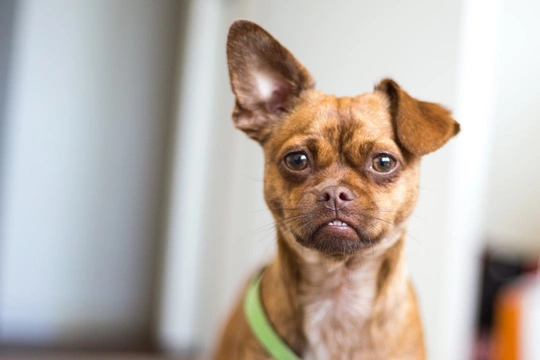
Learning more about the different types of ears dogs can have
Every different dog breed has its own unique physical and personality traits that together, make up the foundation of the breed itself, and the uniformity that we expect from pedigree dogs of a known lineage.
Whilst all domestic dog breeds are closely related to each other in the greater scheme of things, the physical differences between different dog breeds and types can be extreme – for instance, there is not a lot in common on the surface of things between a Chihuahua and a Great Dane!
One physical trait that can vary widely from dog to dog of different breeds is the ears. Whilst most of us are aware that dogs usually have ears that are either pointed or floppy, there are actually quite a number of different recognised ear types that can be found in dogs, some of which are unique to just a few breeds.
If you are wondering about the different types of ears dogs can have or what type of ears your own dog has, wonder no more. In this article we will tell you all about the main ear types found in dogs, and how to identify them.
Upright ears
Upright, pointed or erect ears are found in breeds such as the Siberian husky. Ears of this type are quite wolfish-looking, and are common to dogs of the spitz type, among others.
Upright ears are supported by strong cartilage, and form neat V-shaped points, ranging in size from proportionate and petite to very large.
Dogs with upright or erect ears are able to move them around to a degree, which helps them to pick up sounds coming from different directions. Ears of this type tend to be among the easiest to keep clean and they aren’t generally prone to suffering from ear problems such as recurrent infections, due to the aeration of the ear and the protective tufts of fur within the ear that help to insulate them and keep foreign bodies out.
Floppy ears
Not all dog breeds have ears that stand erect – many breeds like the ever-popular Labrador retriever have floppy or dropped ears, which are slightly raised from the base of the skull by cartilage but that then drop over, covering but not fully closing off the ear canal.
Interestingly, many experts think that floppy ears only occur in dogs at all as a result of domestication by humans and breeding for specific traits – historically, wild dogs probably had upright ears as the norm.
Dogs with floppy ears still have a level of mobility to them, and they can often flick their ears inside out (which can make them look quite comical) but they don’t have as much directional control over them as dogs with upright ears.
Drooping ears
Another floppy ear type is drooping ears, which we associate with breeds like the Basset hound. Dogs of this type have very large, flat, long ears that hang down significantly, often past the dog’s chin. This trait is often found in scenthound breeds, as those long ears help to pick up tiny scent particles and bring them closer to the dog’s nose, where they are interpreted into a scent picture.
Ears like this often fold over and cover the ear canal, which can make it hard for them to get fresh air and that can serve to trap dirt and bacteria. Caring for a dog with ears of this type means regularly cleaning and checking your dog’s ears, in order to keep them clean and in good condition.
Bat ears
Bat ears in the dog are ears that stand erect, but that have a different shape and proportion to normal upright ears. You can see bat ears in breeds like the UK’s most popular dog breed overall, the French bulldog.
Bat ears tend to be very wide at the base but don’t taper upwards at such an acute angle as upright ears, retaining a reasonable width until the points.
Cocked ears
Cocked ears are ears that are mainly upright, but that curve over and droop at the tip – like you might see in some Shetland sheepdogs. Within some breeds, either cocked or erect ears are both accepted within the breed standard.
Butterfly ears
Butterfly ears are only really seen in the Papillon dog breed, and the Phalene variant. Ears of this type are usually erect but quite delicate in construction, and liberally coated with long, fine hairs within the ear and around the edges that make them look somewhat like butterflies!
Papillon dogs have erect butterfly ears, but the dog type we know as the Phalene variant has drooped butterfly ears – and Phalene in the French word for “moth!”
Button ears
Finally, button ears can be seen in the pug, among other breeds, and this type of ear is similar to the cocked ears we mentioned earlier, but the fold of the ear occurs closer to the base than the tip. This produces short ears with a neat, compact and pointed shape with a crease near the base.



